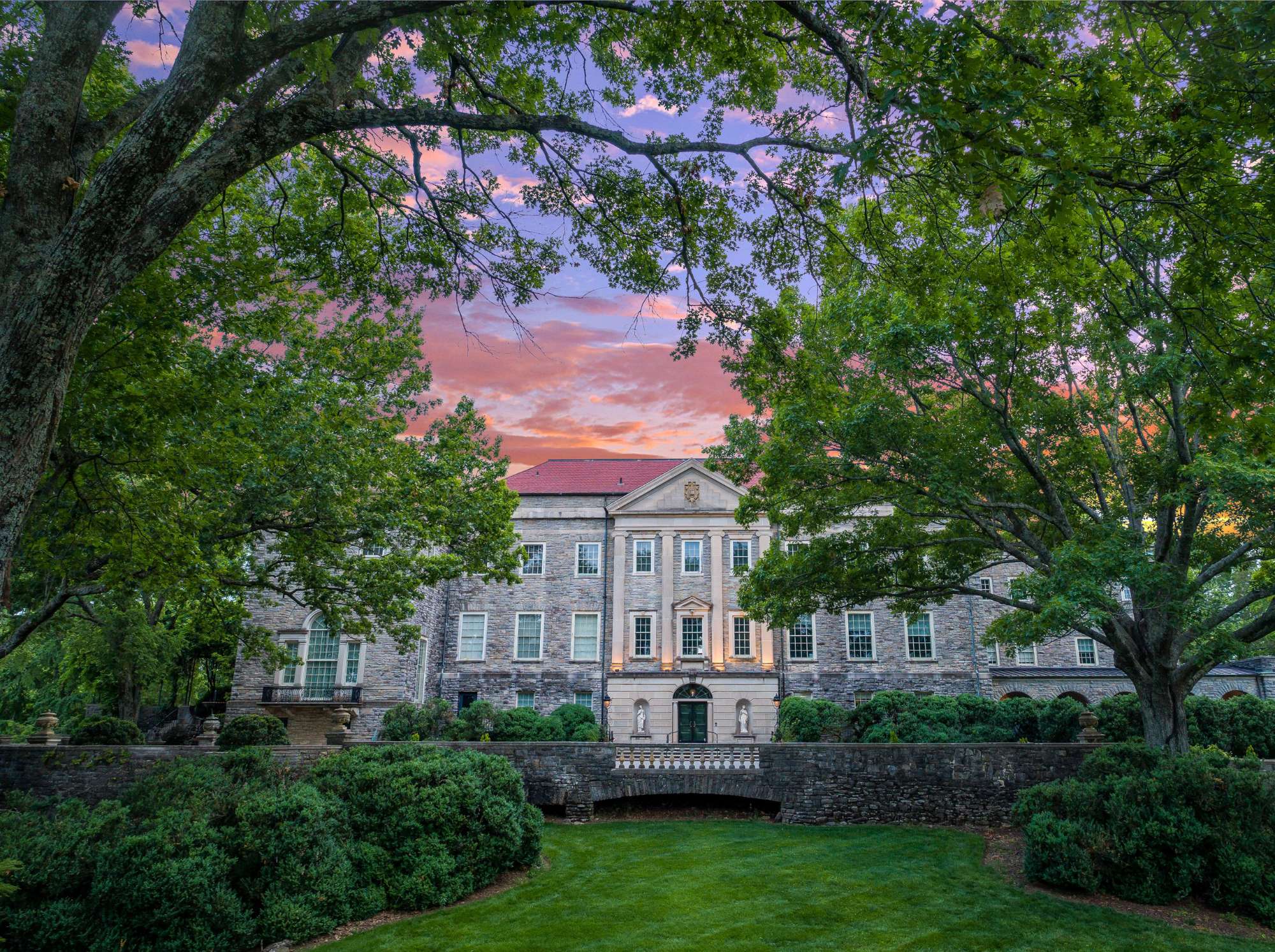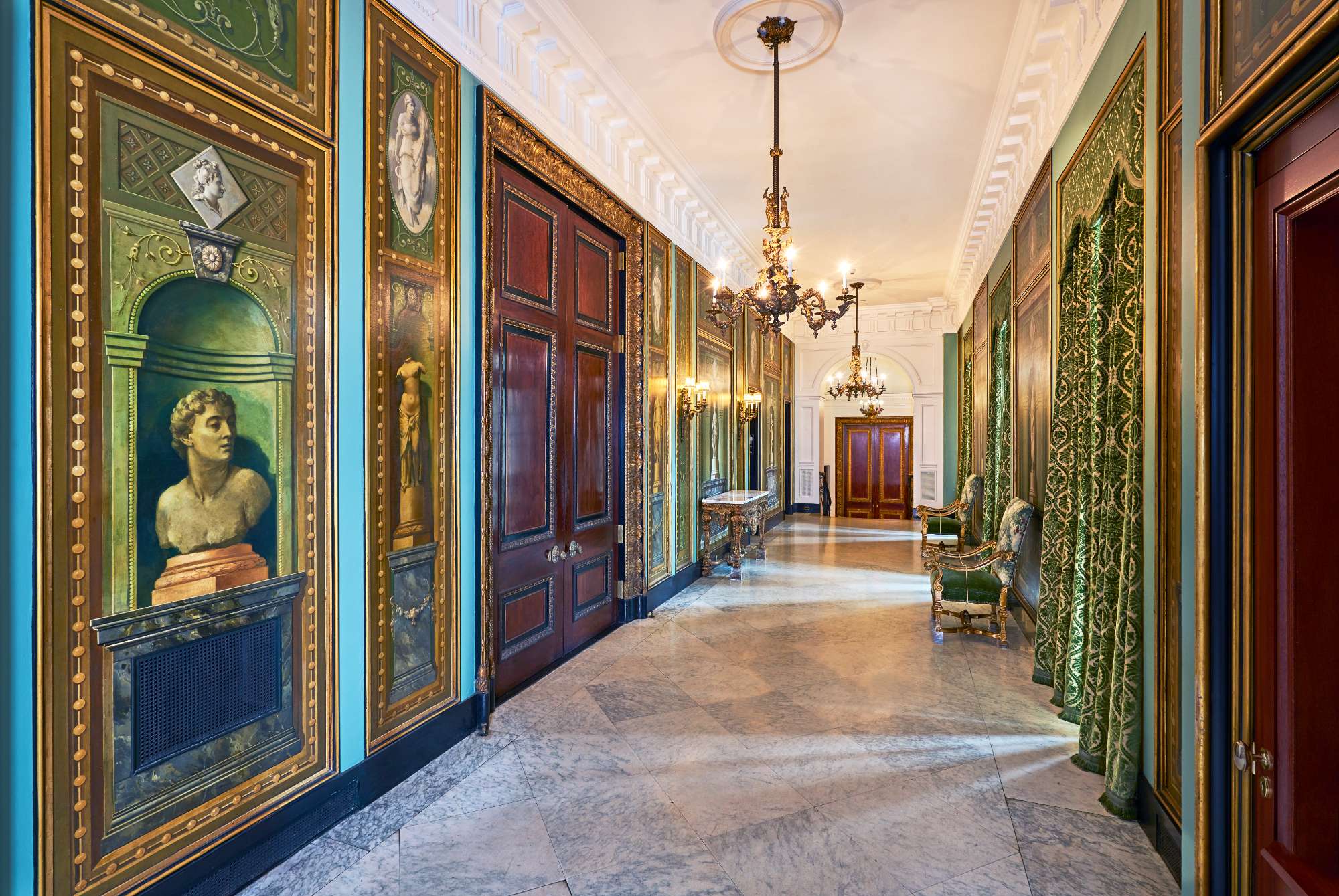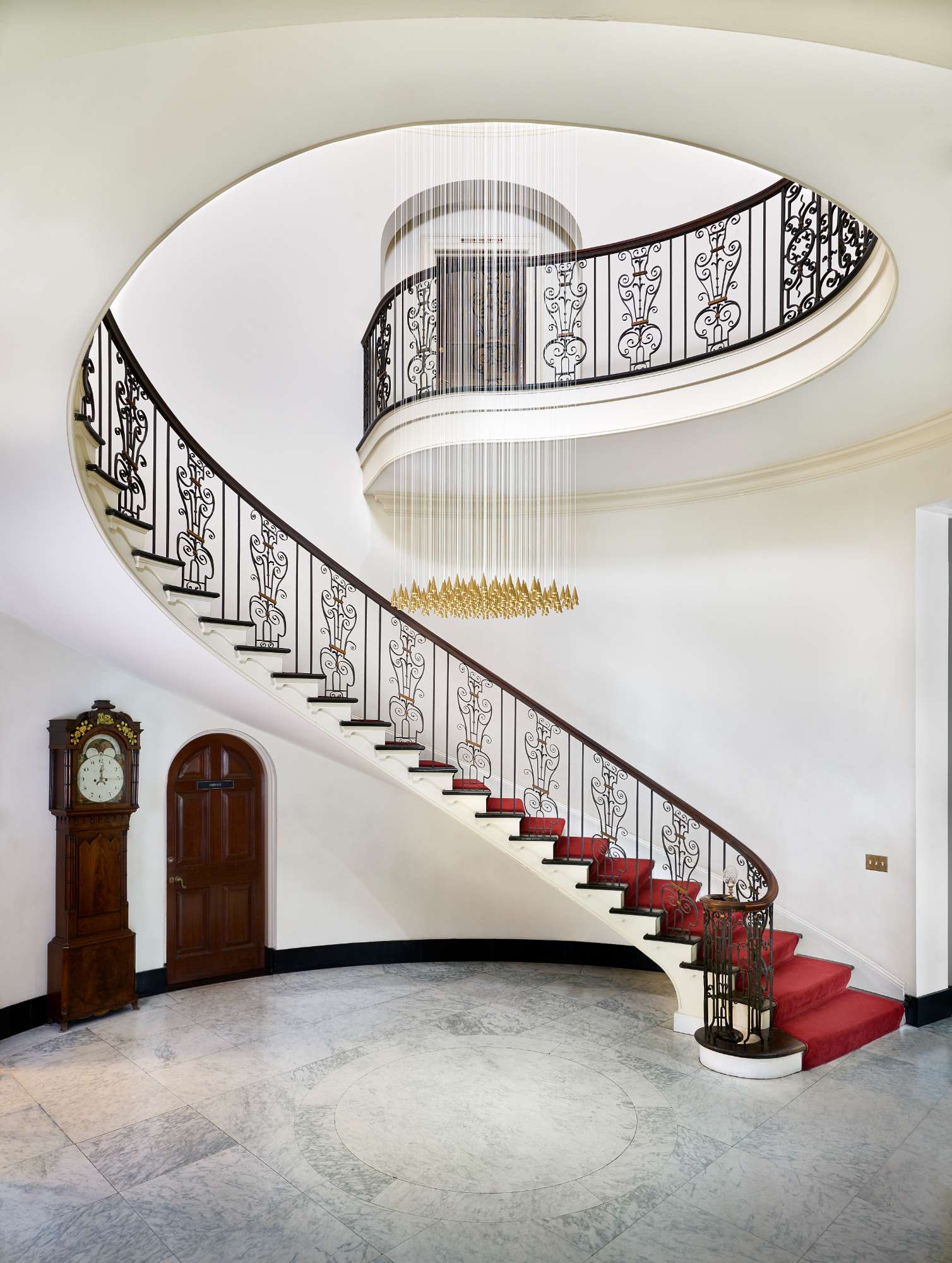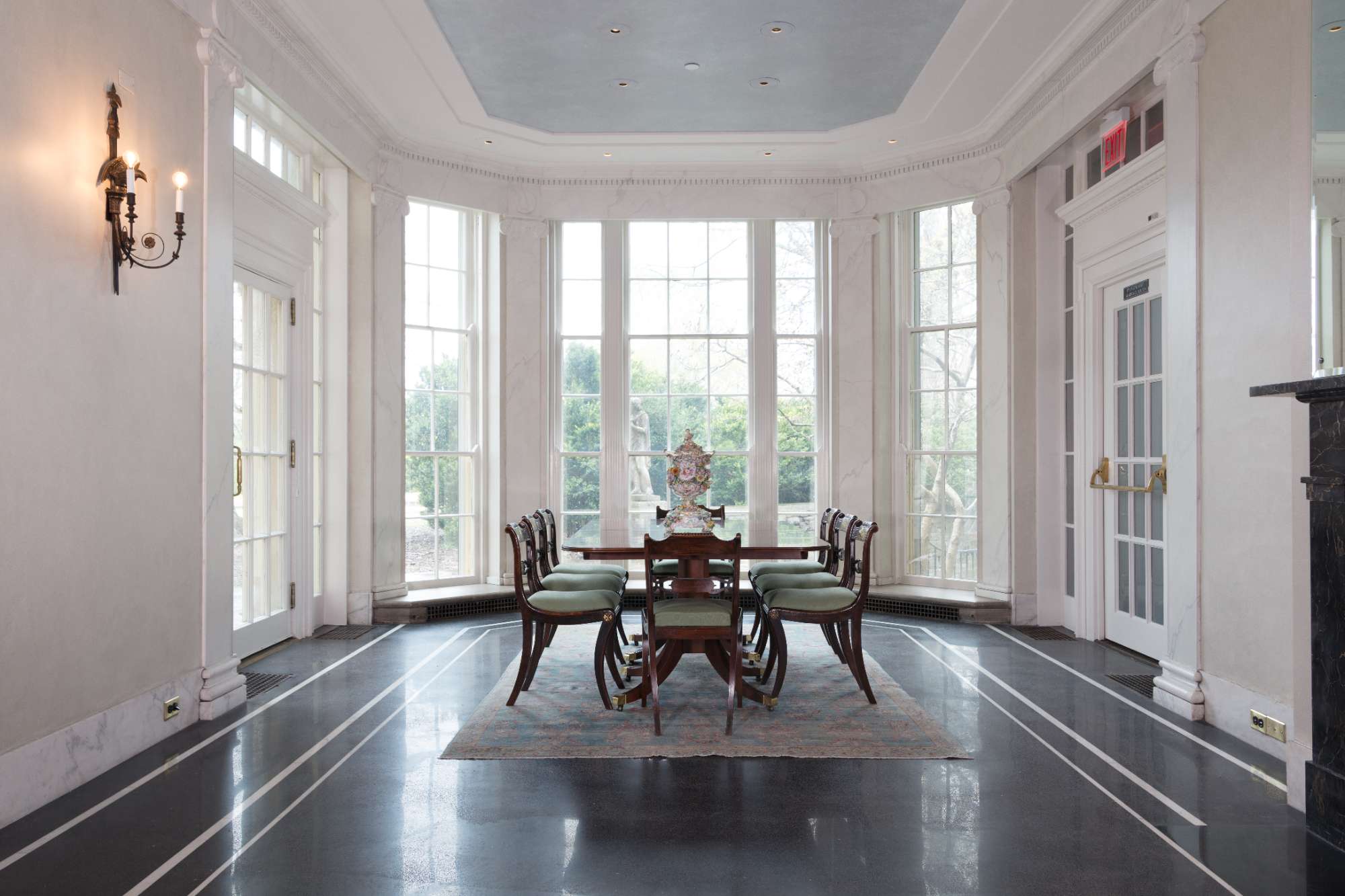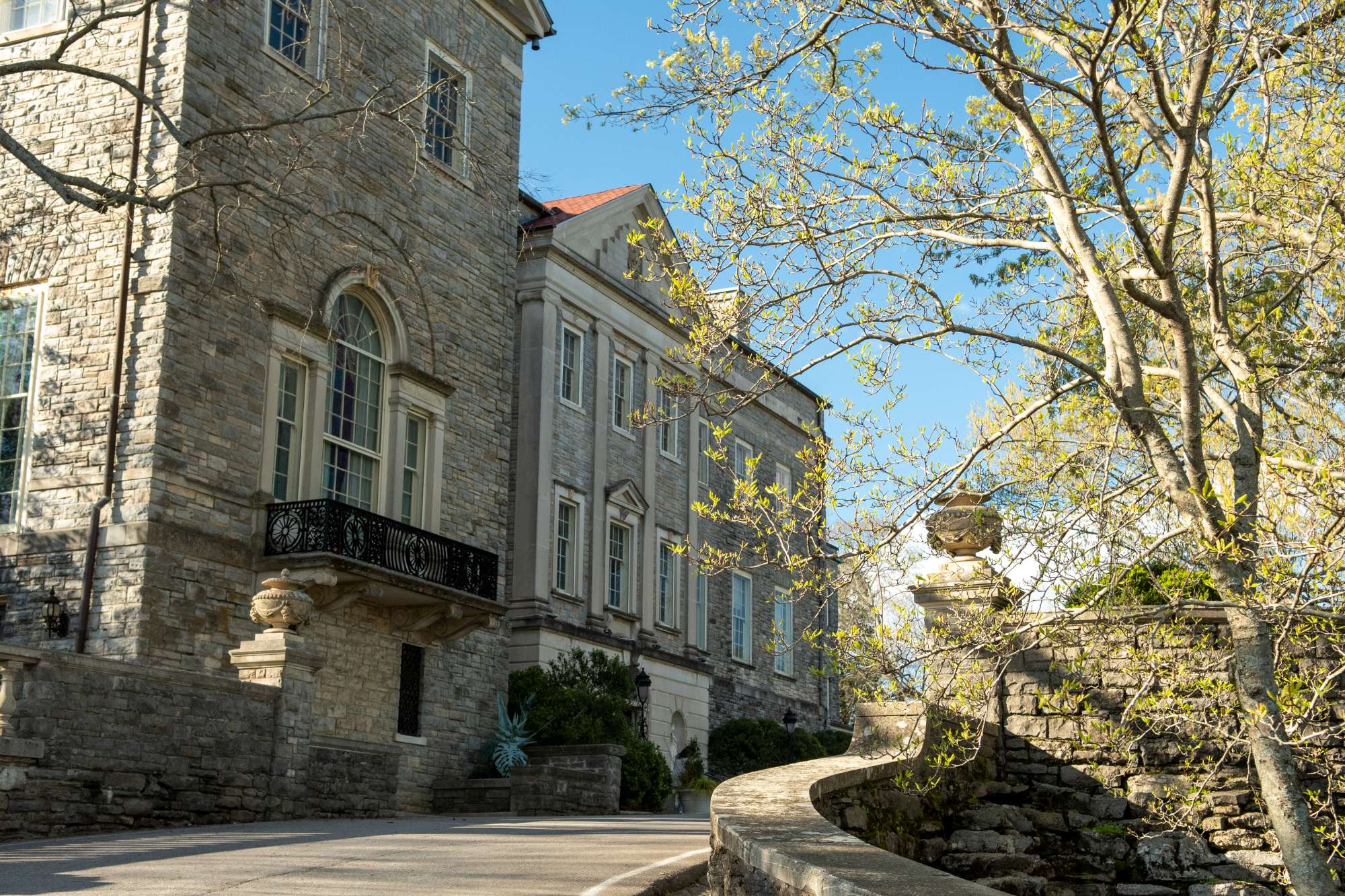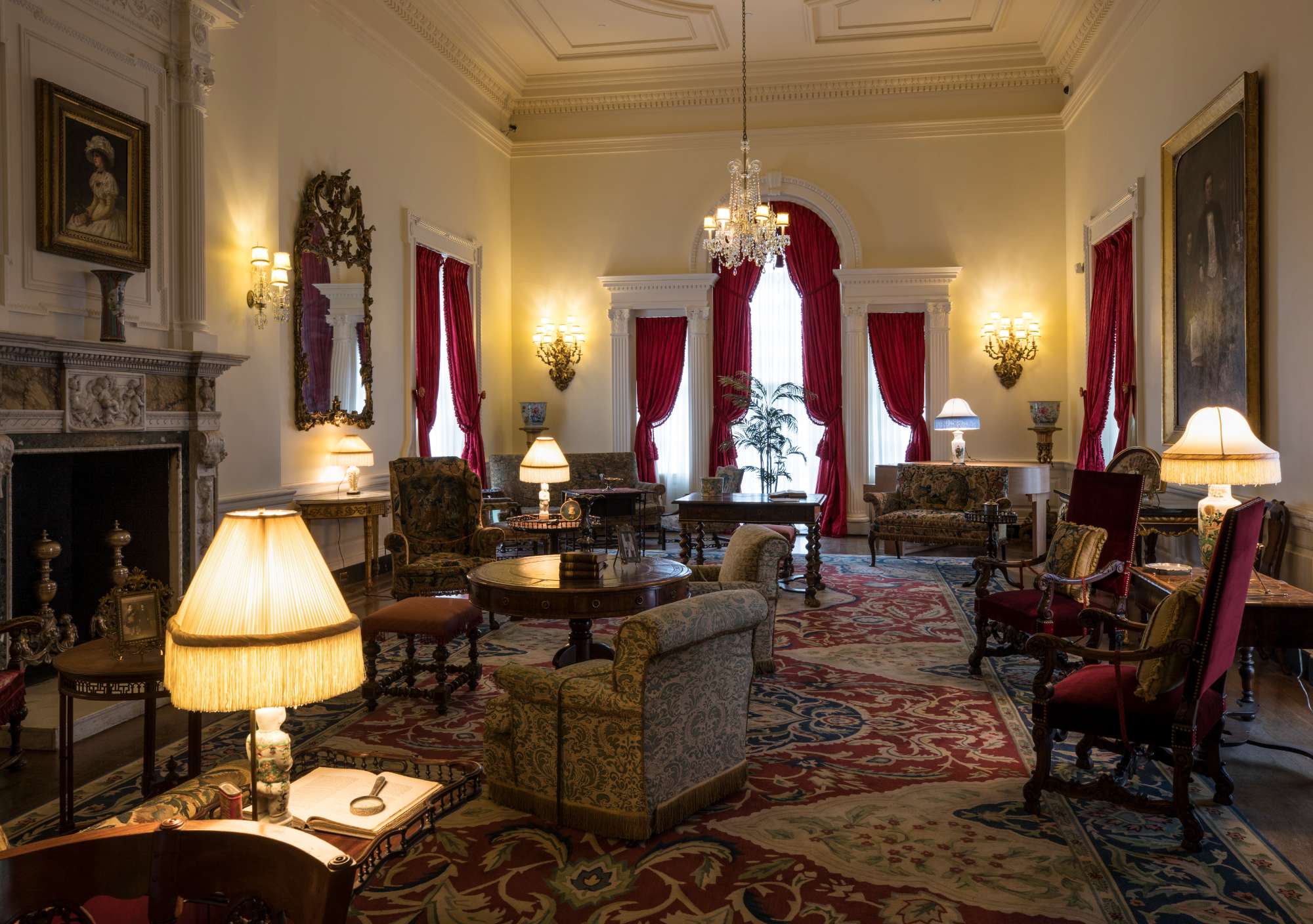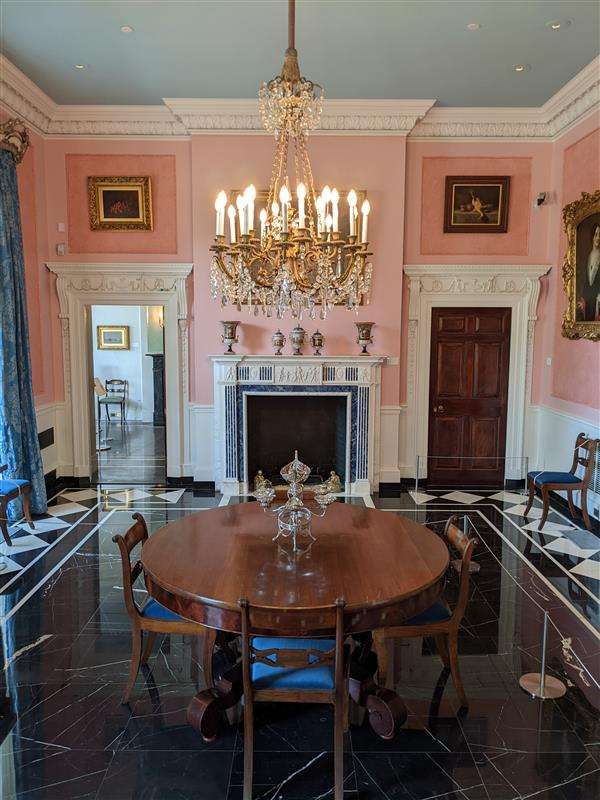The home of Mabel and Leslie Cheek was designed by architect Bryant Fleming and constructed between 1929 and 1932. It conceptually emulates the great country estates and houses of Britain. These grand houses were constructed in a variety of architectural styles, reflective of periods from the sixteenth-century Renaissance through the early twentieth-century Edwardian. However, beginning in the late nineteenth-century Victorian period and continuing through the Edwardian period, many of these estates entered a period of major decline, coinciding with rapidly changing social and economic conditions. During this decline, the contents and architectural elements of many British country houses were sold and dispersed to the American market. The accessibility of these grand materials began to stylistically influence American domestic architecture, which allowed architects and their clients to create a semblance of the “Old World” in the relatively young United States. This was the case for Fleming and the Cheeks, who acquired many architectural elements, including fireplace surrounds, doors, chandeliers, and the paneling in Cheekwood’s Library, from dealers in England.
While the Cheeks had a large assemblage of British material, Fleming’s design for Cheekwood defies rigid stylistic categorization. It doesn’t conform to a particular type or period of British country house, nor to any uniquely American architectural styles. Instead, the house stands as an amalgamation of aesthetics. Clad in roughly hewn Tennessee limestone, Fleming provides a sense of rustication, which connects it both visually and materially with its surrounding environment. He introduces architectural elements reflective of the Classical period, such as those used on the front of the house — a central pediment supported by pilasters with niches flanking the main entrance below. Regularly placed double hung windows on either side of the entrance simultaneously evoke a loosely eighteenth-century “Georgian” sensibility. However, Fleming places the Palladian window, typically located at the top center of a structure, at the lower right of the house’s front elevation.
Most significantly, Fleming designed Cheekwood to respond to the landscape — a unique approach, but one that gained popularity in the early decades of the twentieth century. Occupying the site of the highest elevation on the property, it offers powerful vistas in each direction. Large windows and a door onto Wisteria Arbor provide views of Percy Warner Park to the south, as well as the unfolding landscape below — subtly evolving from untouched wilderness to a refined, balustraded courtyard immediately adjacent. On the north end, the house terminates in an arcade leading to an arched opening, containing a grill that provides a view across the hills toward downtown Nashville. This view is even more impressive from the second story open-air porch, now enclosed in glass. To the west, Fleming provides a view of Swan Lawn from the Transverse Hallway and adjacent Loggia, which, before its enclosure, established a transitional space between the interior and exterior experience. The two-hundred-seventy-degree view from the Morning Room of Swan Lawn and the Bridle Trail offers a similar indoor-outdoor sensibility, functioning as a glassed-in folly of an ancient Greek or Roman temple. This component of the house, a northwestward projection, serves as a counterbalance to the projection of the Drawing Room on the house’s southeastern side. The projection of Wisteria Arbor to the southwest is, likewise, counterbalanced by the arcade to the northeast.
Fleming further implemented counterbalancing and echoed the stepped landscape of the outdoor environment through his design of the interior. The Rotunda, which contains the house’s main stairwell that spirals into a grand Classical dome, connects to the long Transverse Hallway that ends at Octagonal Hall. The latter along with the Library establish an intermediate level between the Transverse Hallway and the more sunken Drawing Room. This interplay of ascension and descent enlivens the interior of the house.
